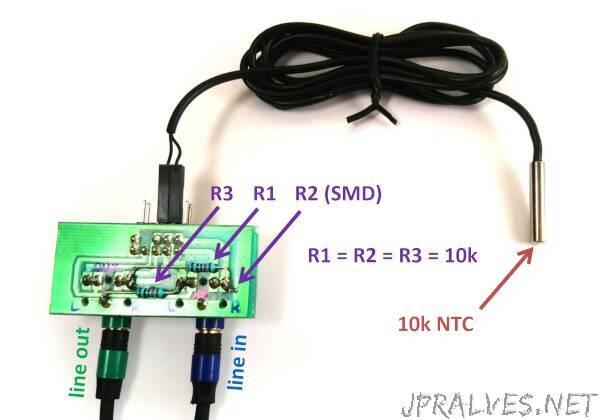
“This post describes a simple method of reading resistive and capacitive sensors using a standard PC sound card. Virtually any desktop or laptop could be turned into a simple data acquisition system using this method. Thanks to moderate system requirements, even the very old computers can be repurposed for this application. Socket 478 based platforms from early 2000’s with integrated sound cards are readily available for ~free from recycling bins and are perfectly capable of running the data acquisition software (thankfully, Debian still supports 32-bit platforms). With the total cost of other components under $1, this can hopefully bring affordable and interactive data acquisition to DIYers, experimenters and students in science and physics classes. I do not recommend (in fact, I highly discourage) using this method for anything but educational purposes. It is not meant to be used for industrial or even lab data acquisition – there are much better alternatives.
Another point of this post is to demonstrate that old PC motherboards are under-appreciated in DIY circles. Even the older ATX motherboards are equipped with many useful capabilities:
audio ADCs and DACs (AC-coupled)
DC voltage DACs for fan speed control
hall effect sensor encoders for fan RPM readback
PWM outputs for RPM control on 4-pin fan headers
I2C busses in video ports
dry contact inputs: “chassis intrusion” switches, audio jack detection contacts on front panel audio headers
multiple voltage references (~1V core and memory voltages, 3.3V, 5V, 12V)
In addition, newer motherboards are equipped with goodies like thermistor inputs (e.g. headers T_SEN1, T_SEN2, etc. on MSI motherboards) that might not necessarily measure temperatures of water cooling loops :)
Example circuits are purposefully simplified to utilize only widely available passive components. While the quality of signal processing can be improved by introducing simple buffering and amplification, additional opamps and voltage sources would unnecessarily complicate the method, introduce additional expenses, and require more advanced electronics and soldering skills to implement. Simplicity of using only passive networks is a desired feature, and not a bug.”
